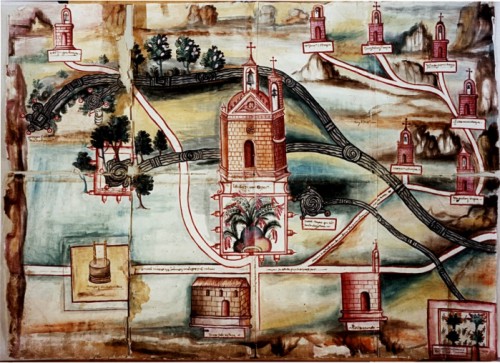| European
expansion into Mexico, Central and South America, and the southwestern
region of the U.S., where Spanish and Portuguese Catholics planted
Christianity. |
 |
|
Colonial
settlement of Latin America
|
Before the Reformation,
papal lines of demarcation
assigned to Spain and Portugal colonial spheres of interest in the western
hemisphere. Spanish explorers, missionaries, and settlers penetrated and
developed areas which are now part of the U.S., including Texas, Arizona,
New Mexico, California, and Florida. The Roman Catholicism of Latin America
was theologically stamped by the Council
of Trent, yet politically controlled by Spain and Portugal. Missionaries
such as Eusibio Kino came from religious
Orders like the Jesuits, Dominicans, and Franciscans. Their chief strategy
was "the mission," an enclosed community that taught agriculture and trades
together with the Christian faith. Catholic missionaries often found themselves
in conflict with their fellow countrymen who sought to exterminate, enslave,
or exploit the Indians as in the Paraguay
mission. Bartholomé
de Las Casas and others protested such brutal treatment, but the African
slave trade soon became a substitute
for Native American slavery. In time, native peoples blended their own
beliefs and practices into the Christian teaching they received from missionaries.
The independence movements which freed Latin
America from European control had both religious and political dimensions.
|